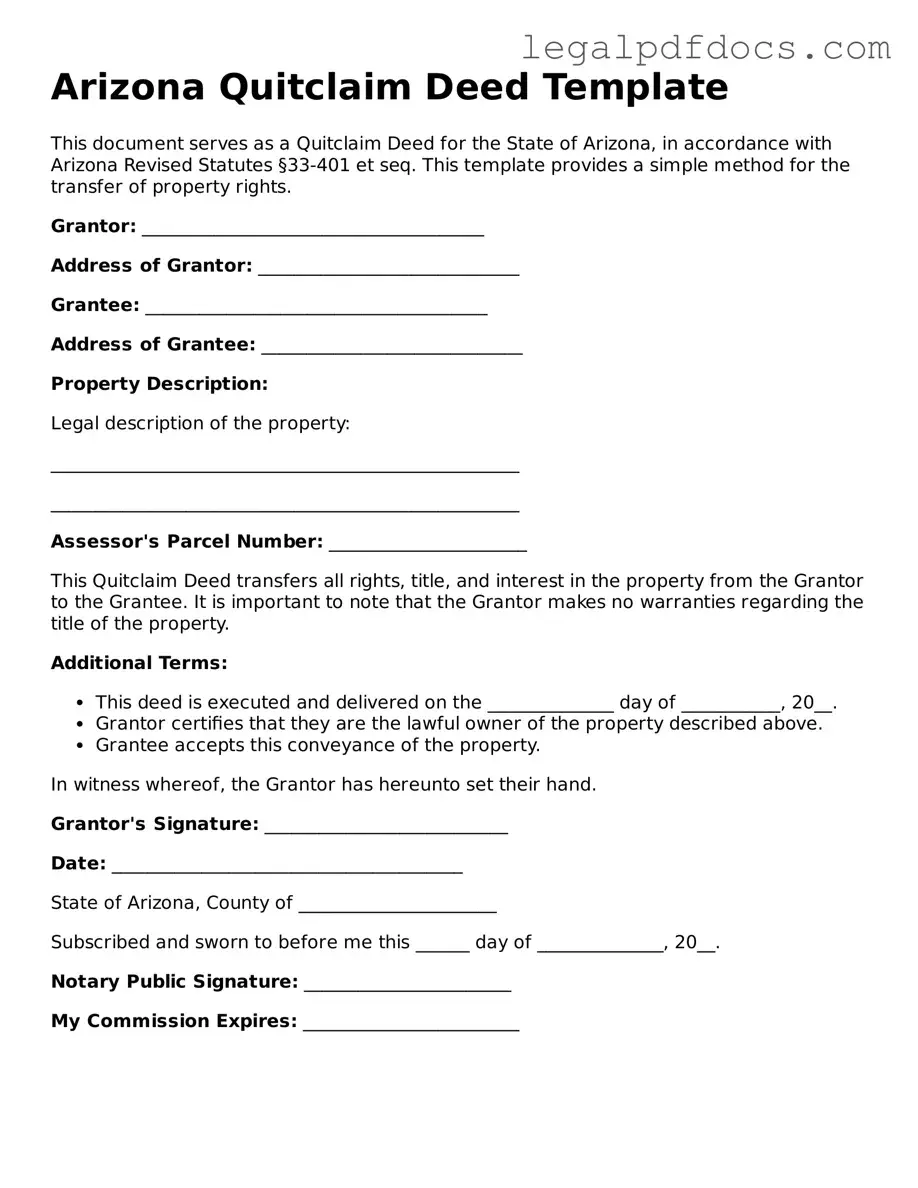The Arizona Quitclaim Deed form serves as a vital legal instrument for property transfers, allowing individuals to convey their interests in real estate without making any warranties about the title. This straightforward document is commonly used in various situations, such as transferring property between family members, clearing up title issues, or facilitating a quick sale. With its simplicity, the Quitclaim Deed provides a means for the grantor to relinquish rights to the property, while the grantee receives whatever interest the grantor holds—if any. Importantly, this form requires specific information, including the names of both parties, a legal description of the property, and the date of the transfer. Additionally, it must be signed in the presence of a notary public to ensure its validity. Understanding the implications of using a Quitclaim Deed is crucial, as it does not guarantee a clear title, leaving the grantee exposed to potential claims from third parties. As such, while the Quitclaim Deed offers a quick and efficient method for property transfer, it is essential to approach its use with caution and awareness of the risks involved.
